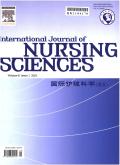管理不确定性:中青年淋巴瘤患者恢复正常的扎根理论研究
IF 3.1
3区 医学
Q1 NURSING
引用次数: 0
摘要
目的本研究旨在建立一个基于经验数据的理论框架来解释与中青年淋巴瘤患者在整个疾病过程中密切相关的行为模式。方法本研究遵循经典的扎根理论方法,包括理论抽样、实体编码、理论编码、不断比较、备忘录撰写和整理等步骤。基于“全是数据”的原则,使用了多种数据类型,包括34位参与者提供的访谈数据和观察笔记,以及来自“淋巴瘤之家”网络平台和“淋巴瘤之家086”公众号的40个相关辅助文本。选取两本淋巴瘤患者自传体书籍作为资料来源。数据收集和分析在迭代过程中进行,直到达到理论饱和。遵循COREQ检查表报告本研究。结果中青年淋巴瘤患者的主要关注点是恢复正常,而管理不确定性是恢复正常的主要行为模式。不确定性包括两种相互关联的类型:疾病的内在不确定性和患者的感知不确定性。管理不确定性的策略有四种:重建确定性、适应性应对、防御性缓冲和补偿性变化。管理不确定性受到疾病特征和认知、社会资源和文化观念的影响。管理不确定性的后果正在达到一种新常态。结论广泛性不确定性显著影响中青年淋巴瘤患者的日常生活。因此,管理疾病相关不确定性以维持正常的策略在这一人群中普遍存在。这个解决不确定性的理论框架可以作为理解和制定有针对性的干预措施来管理不确定性的基础。未来的研究应侧重于管理不确定性,以帮助患者恢复正常。本文章由计算机程序翻译,如有差异,请以英文原文为准。
Managing uncertainty: A grounded theory study of restoring normality in young and middle-aged patients with lymphoma
Objectives
This study aimed to generate a theoretical framework based on empirical data to explain the behavioral patterns closely related to young and middle-aged patients with lymphoma throughout the disease.
Methods
This study followed the classic grounded theory methodology, involving procedures such as theoretical sampling, substantive coding, theoretical coding, constant comparison, and memo writing and sorting. Multiple data types were used based on the principle of “all is data,” including 34 participants providing interview data along with observation notes and 40 relevant secondary texts from the “Lymphoma House” network platform and the “Lymphoma House 086” public account. Two autobiographical books written by lymphoma patients were also selected as data resources. Data collection and analysis were conducted in an iterative process until theoretical saturation was reached. The COREQ checklist was followed to report this study.
Results
The main concern of middle-aged and young patients with lymphoma was identified as restoring normality, while managing uncertainty was the main behavioral pattern for restoring normality. Uncertainty consists of two interrelated types: inherent uncertainty of illness and perceived uncertainty of patients. Four strategies are used to manage uncertainty: reconstructing certainty, adaptive coping, defensive buffering, and compensatory changing. Managing uncertainty is influenced by disease characteristics and perceptions, social resources, and cultural concepts. The consequence of managing uncertainty is reaching a new normality.
Conclusions
Pervasive uncertainty significantly affects the daily lives of young and middle-aged patients with lymphoma. Consequently, strategies for managing disease-related uncertainty to sustain normality are commonly observed in this population. This theoretical framework for addressing uncertainty can serve as a foundation for understanding and developing tailored interventions to manage uncertainty. Future research should focus on managing uncertainty to help patients restore normality.
求助全文
通过发布文献求助,成功后即可免费获取论文全文。
去求助
来源期刊

International Journal of Nursing Sciences
Nursing-Nursing (all)
CiteScore
6.10
自引率
2.60%
发文量
408
审稿时长
25 days
期刊介绍:
This journal aims to promote excellence in nursing and health care through the dissemination of the latest, evidence-based, peer-reviewed clinical information and original research, providing an international platform for exchanging knowledge, research findings and nursing practice experience. This journal covers a wide range of nursing topics such as advanced nursing practice, bio-psychosocial issues related to health, cultural perspectives, lifestyle change as a component of health promotion, chronic disease, including end-of-life care, family care giving. IJNSS publishes four issues per year in Jan/Apr/Jul/Oct. IJNSS intended readership includes practicing nurses in all spheres and at all levels who are committed to advancing practice and professional development on the basis of new knowledge and evidence; managers and senior members of the nursing; nurse educators and nursing students etc. IJNSS seeks to enrich insight into clinical need and the implications for nursing intervention and models of service delivery. Contributions are welcomed from other health professions on issues that have a direct impact on nursing practice.
 求助内容:
求助内容: 应助结果提醒方式:
应助结果提醒方式:


